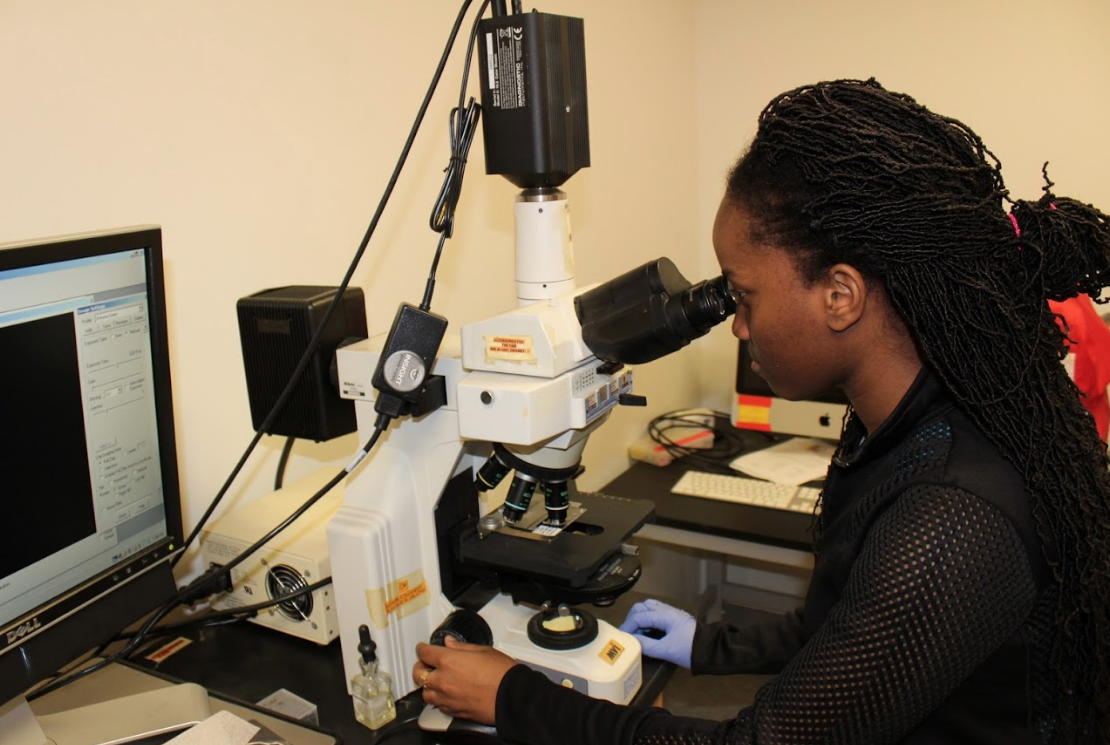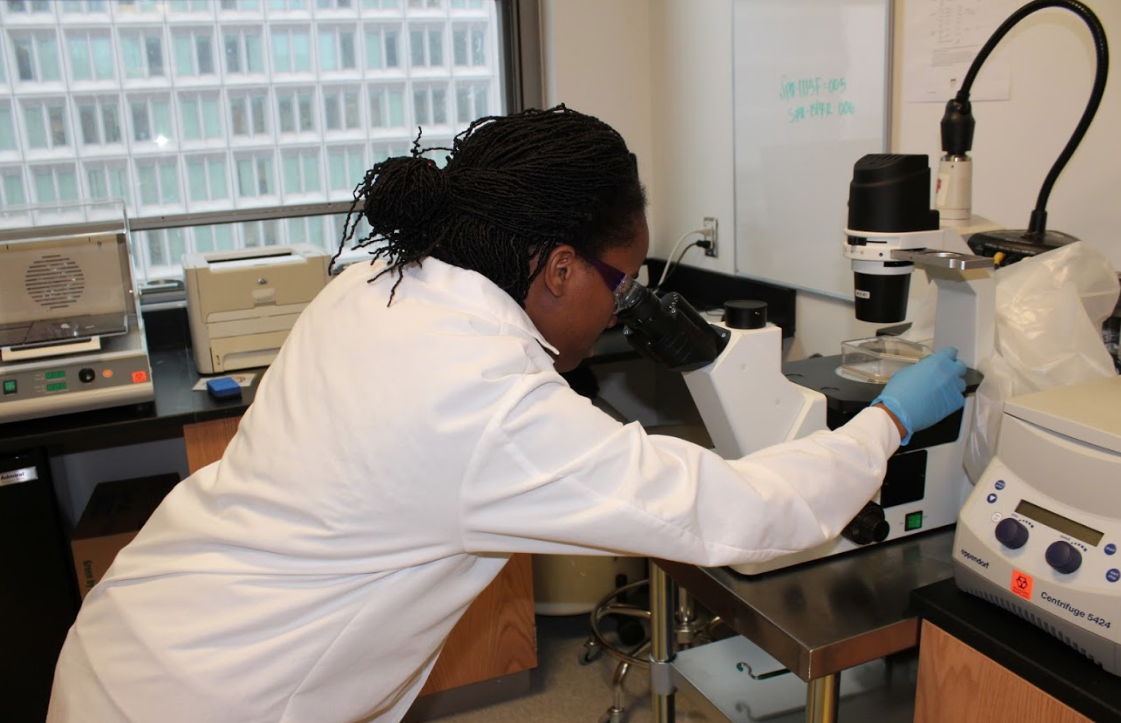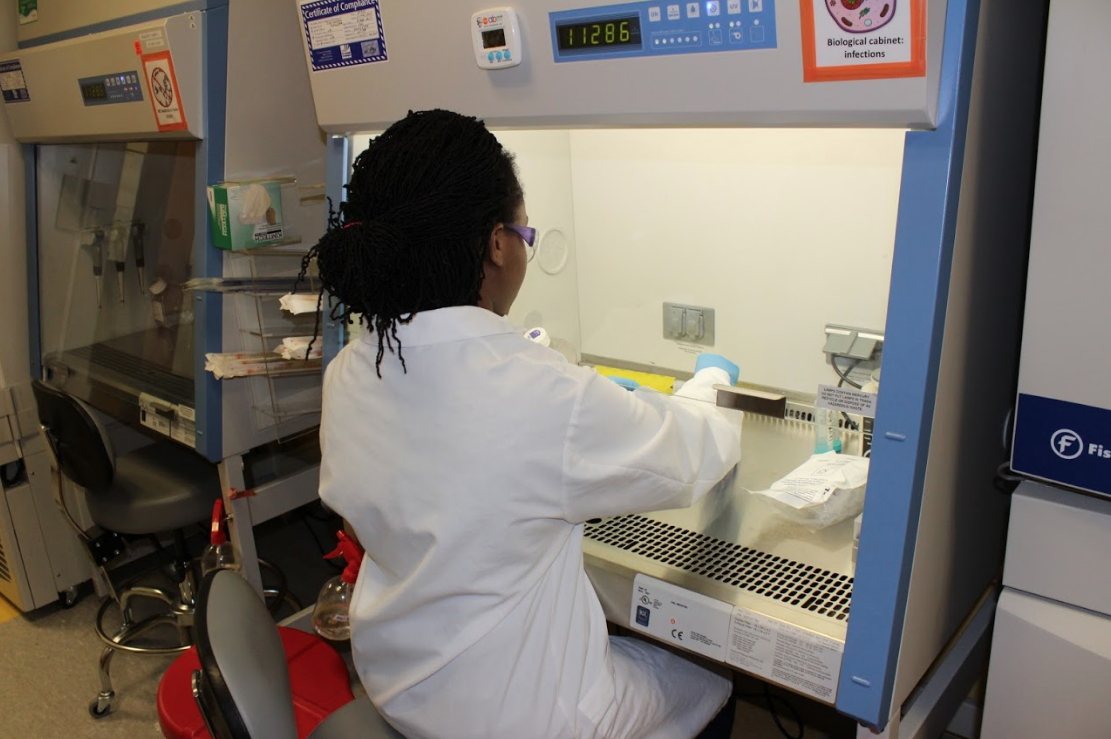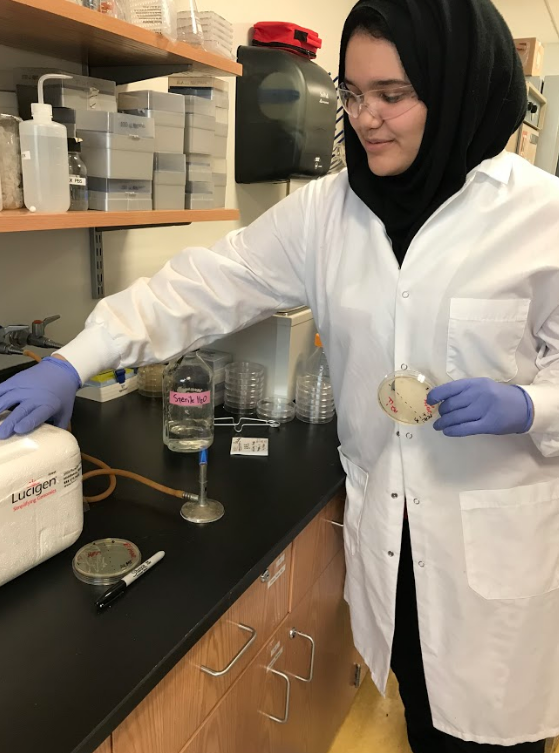Suffolk research students thrive on bacteria
April 4, 2018
Suffolk biology students have been engrossed in their research on bacteria, aspiring to one day solve the mystery of how these microorganisms have the ability to cause lethal infection. With the ongoing battle to target and terminate antibiotic resistant bacteria, there is an incentive to study the life-threatening features of bacteria and find possible therapeutic interventions.
At Suffolk University, six biology students are continuing this investigation through their microbiology research, having studied some of these microscopic organisms. Headed by Assistant Professor in the Biology Department and microbiologist Dr. Maghnus O’Seaghdha, these undergraduate research projects have the potential to uncover new insights into two potentially harmful species of bacteria.
Senior biology major Olivia Huber has been researching Staphylococcus aureus (or S. aureus), a bacterium known to cause minor skin infections such as boils, and major diseases such as bacterial pneumonia. With antibiotic resistance being a prominent health issue worldwide, the main concern of Huber’s research is understanding the prevalence of MRSA (Methicillin-resistant S. aureus), a strain of S. aureus that is resistant to many antibiotics that include methicillin, among a healthy adult cohort. MRSA poses a threat to individuals that carry it because it is an opportunistic pathogen, meaning it has the capability to cause severe disease under certain circumstances, especially among those who have an impaired immune system. These MRSA bacteria primarily cause infection in the healthcare setting and communities where there is direct contact with an infected person, use of contaminated objects, and the inhalation of dispersed droplets from sneezing and coughing.
Huber has sought to determine how much of the general population carry these bacteria and whether or not colonization is restricted to the best-studied site, the nose, or additional sites such as the throat or armpit. Her research project, for a year now, has been in collaboration with Simmons College, as she has used cells taken from the nose, throat and armpits of Simmons’ biology and pre-nursing students. Identification of MRSA in understudied sites of colonization on the body might provide important information to healthcare providers in controlling the spread of MRSA to patients and other healthcare professionals.
“What a lot of people don’t realize is that about more than two 2 percent of the population [in the U.S.] has [MRSA] colonized on their body, just normally, and that [does not] mean [you are] going to get sick or anything, it’s just part of your bacteria, except it is an opportunistic pathogen,” said Huber.
Junior and biology major, Joanna Pizzo, is the newest member of the O’Seaghdha lab and plans to possibly take on Huber’s research this summer.
Bouchra Benghomari, a freshman biochemistry major, has been working alongside Huber on the same research project in the O’Seaghdha lab as a work-study student for the Biology Department since last semester.
“I think being the only freshman here gives me more of an opportunity,” said Benghomari, “I get to see more of the process and I get more insight about what I want to do in the future, so I have way more time to decide is research right for me,” said Benghomari.
Senior biology major, Britannia Moodie, has also been studying S. aureus since last summer, but in a separate project from Huber’s. Using purified, human throat cells, Moodie’s ongoing research at Suffolk focuses on following the passage of S. aureus within these cells microscopically and determining their exact location inside the cell. Graduating in the fall, Moodie appreciates how these bacteria have developed her career interest in dentistry and research, as she has dedicated up to 20 hours per week on research alone.
“It gets me excited! That’s honestly all I think about most nights before bed, is my project going to work tomorrow?” said Moodie. “I love the thought process, the trouble-shooting, and just going through the motions every single day.”
In a parallel project to Moodie is junior and biology major, Sabrina Ali, who has performed experimental assays on different strains of S. aureus to compare their survival rate inside throat cells over time. Through infecting human throat cells with S. aureus, the goal is to determine if the throat cells are a major colonization site for these bacteria and if there is an aspect of throat colonization that can be targeted to reduce bacterial survival.
“We want to basically combat recurring Staph [S. aureus] infections and we want to know does it colonize the throat and if it does how can we decrease survival. So it’s basically a public health approach,” said Ali.
Sara Tavana, a sophomore and biology, has researched an infectious bacterium Group A Streptococcus (GAS), in a project in collaboration with a laboratory at the University of Maryland. Since last summer, Tavana has studied how GAS defends itself from the human immune system.
GAS is an opportunistic pathogen that is best known for causing strep throat, but this bacterium also has the ability to cause the serious invasive infection known as necrotizing fasciitis (a flesh eating disease). Even though GAS is still responsive to many antibiotics including penicillin, it remains a globally disseminated pathogen for which there is no vaccine. Tavana’s work seeks to define the response of GAS to a type of antimicrobial peptide produced by human neutrophils, a type of white blood cell. Neutrophil peptides are often potent enough to kill bacteria like GAS, however, when there is not enough present to kill this bacterium this may be a trigger for infection.
“If you want to defeat an army, you study how they defend themselves against different techniques,” said Tavana.
With the ambition to collaborate with the Physics Department to combine the techniques of biology and engineering into her research, she hopes to use their electron microscope to visualize the effect of antimicrobial peptides on the bacterial surface.
Originally from Persia, Tavana grew up in a family of doctors and experienced the distresses of a hospital setting at the age of 7. This first-hand encounter influenced her to further research bacteria, like GAS, that are a threat to human health.
Tavana also values the measureless support received from her fellow lab members as well as guidance from O’Seaghdha and other collaborative faculty that have helped to make her research experience worthwhile.
“My normal life is filled with dramas and sometimes it’s really difficult. I can’t go back to see my family, but going into [the] lab and coming here and doing research I feel like I have a new family,” said Tavana, “It’s a supportive group of professors that help each other out and help their students. It’s what you want to see in a university.”
O’Seaghdha is thrilled and impressed by his current students as he sees them constantly motivated, enthusiastic, and hardworking.
“I think I’ve been really lucky. The students are amazing. They’re doing relatively difficult projects and they’re making great progress in all areas,” said O’Seaghdha, “I hope all the students I take are like the current crop because they’re so into it and they’re so good at what they’re doing.”



